Ilford XP2 is a black and white film emulsion designed to be processed in C-41 color chemistry. The box speed is 400, but many people shoot it at higher speeds with good results. XP2 is known for fine grain, sharpness, and long scale.
I did a test roll when the earlier emulsion, XP1, first came out about 30 years ago and was impressed with the fine grain and sharpness, but I never shot with it again. A couple weeks ago I decided to use the newer XP2 emulsion. Why did I revisit it? I wanted to see how it did with my TLR Rolleicord and a recently acquired Nikon F3, so I shot a roll of each format. One take away was that the fine grain I remember from my first roll of XP1 35mm was not repeated. Why would my first roll, that was processed in a 1-hour lab, be much better than a recent roll processed in a high end modern lab? I really don’t know. Perhaps overexposure contributes to more grain, or maybe the most recent lab is using a non-Kodak C-41 chemistry? I’d like to hear if others have had similar inconsistent results. Here are the shots.
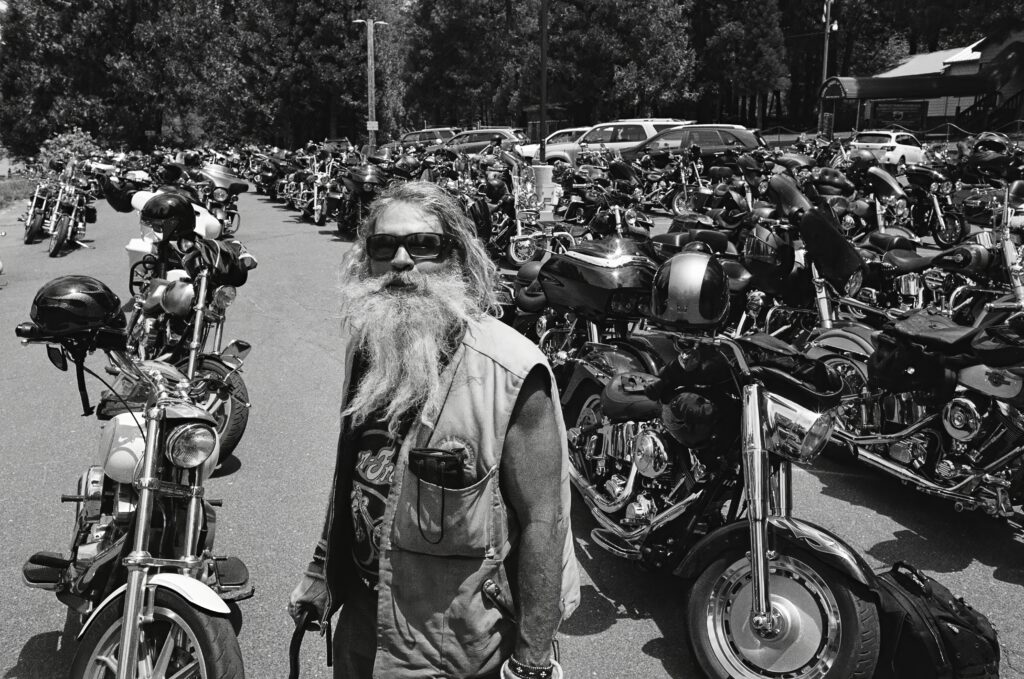
Above: Jacob, the leader of the Riders for Christ Motorcycle club from the Central Valley of California. They were having a ‘Prayer In’ at White Pines Lake in Arnold, California. Jacob looks threatening, but I got the feeling it’s all for show. I counted 341 riders at this meeting and there were no fights, no drinking, and no cursing. They just had a 1-hour prayer meeting and rode off. I would have gotten more shots, but I had my dog on a leash and she was going to burn her nose on a hot tail pipe if I didn’t keep her close.
This next shot is of a friend, John Harding. He’s watching the motorcycles ride up the highway. He owns a Harley and was impressed by the nice bikes.
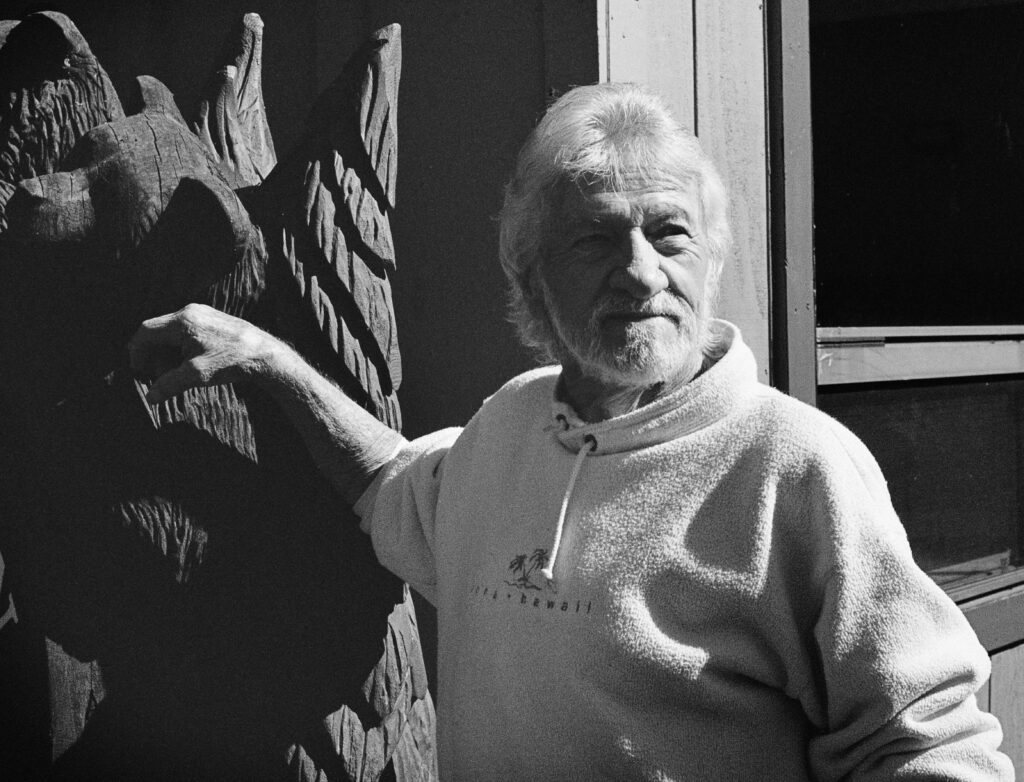
Later in the day I visited an area next to the campus of Columbia College where I teach. All the exposed rock formations were once underground, but during the gold rush of 1849, miners used high pressure water hoses to strip away the soil and recover gold. The land was never the same because very little top soil remains to support trees. This area is called the Labyrinth and is easy to get lost in. Over the years, several people have died in here from falls, murders, and starvation. It covers thousands of acres and is home to coyotes, snakes and mountain lions. During rainstorms it is dangerous to be in the Labyrinth because of flash flooding.
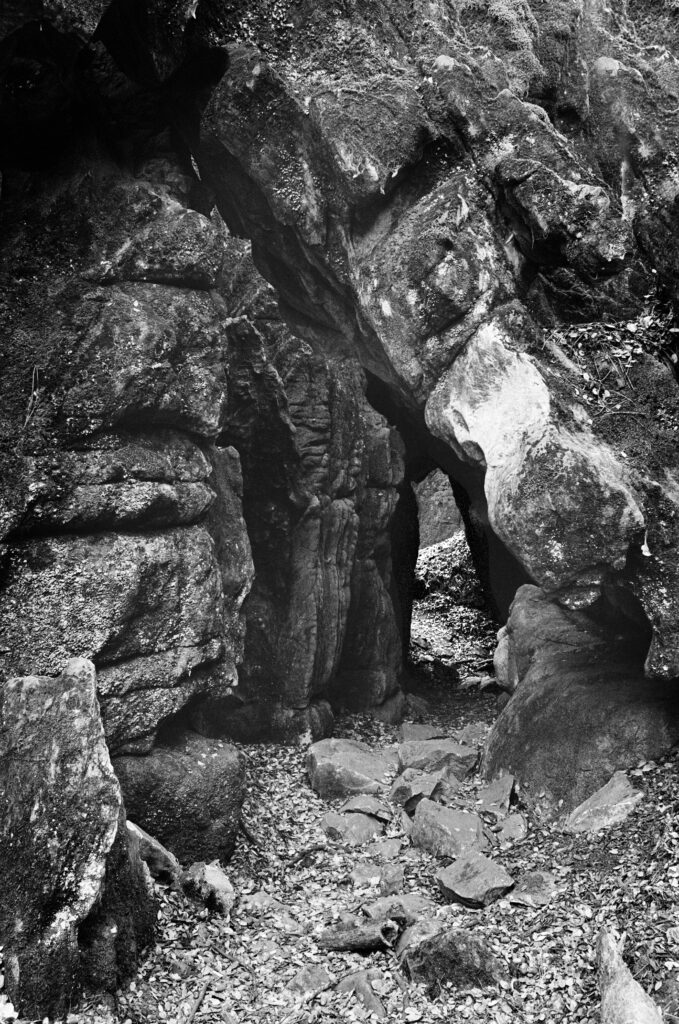
I would never enter the Labyrinth without a guide. On this day I was accompanied by Weston, one of my students. He’s in the process of mapping out the Labyrinth, which has never been done.
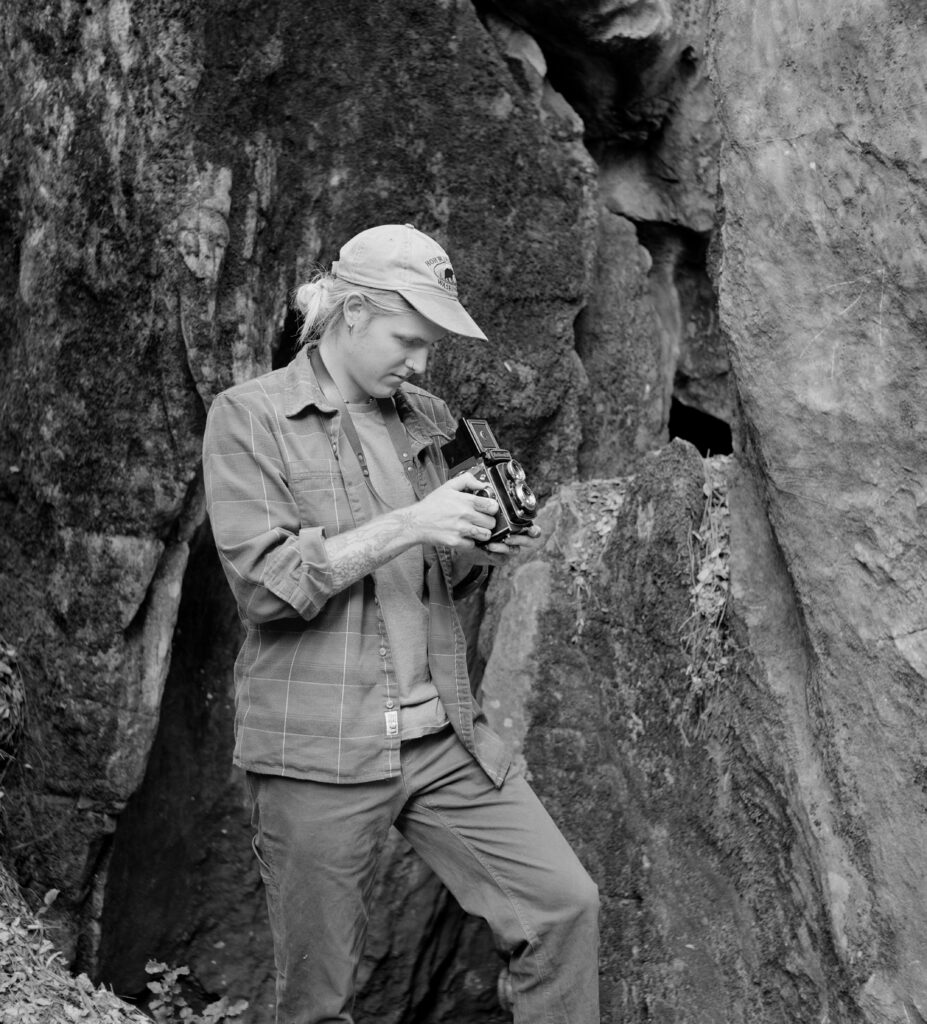
I liked this rock outcropping. I doubt I could find this spot on my own. I’m not even going to try. This was shot with XP2. Twin lens Rolleicord.
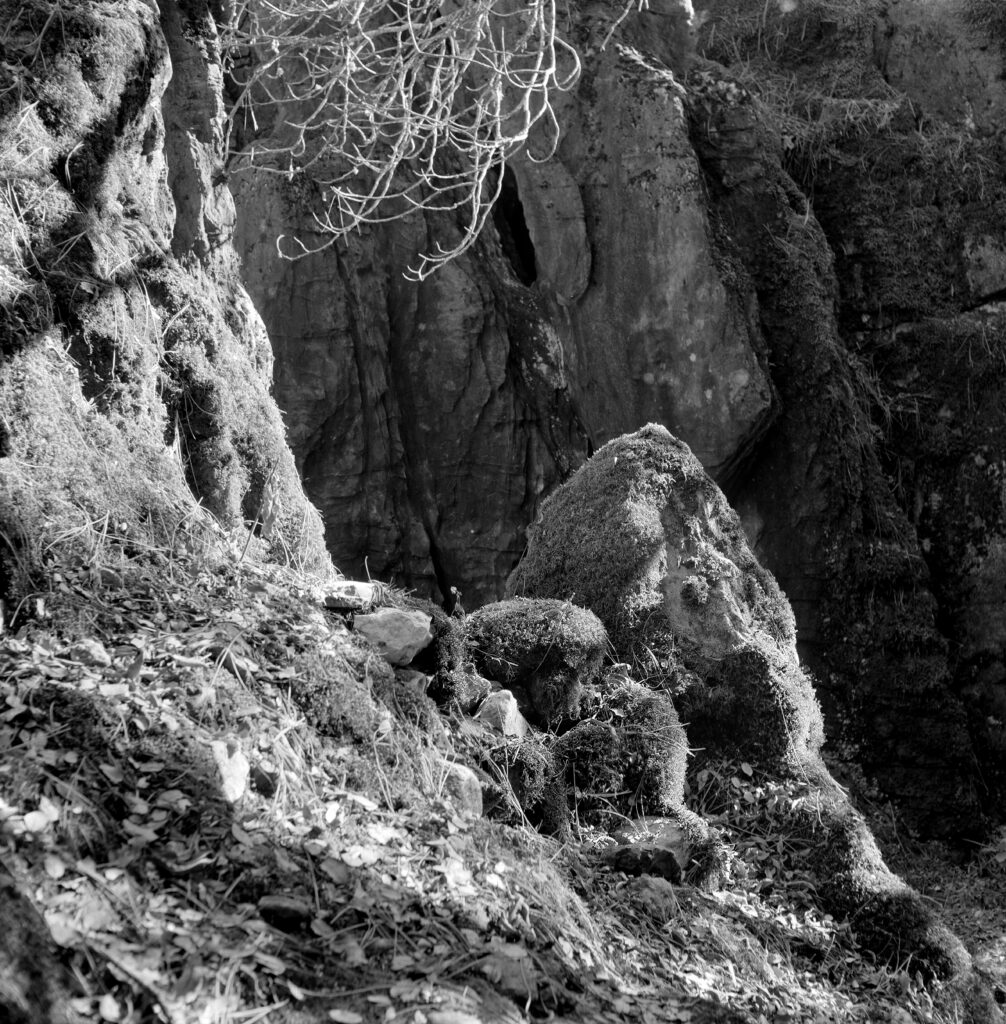
Conclusions: My results from XP2 35mm on this day were about as grainy as HP5 processed in HC110. I didn’t see any advantage to using it over HP5, considering the cost of lab processing and scanning. No reason to become emulsional about it. If you’re prepared to do C-41 processing yourself, it’s worth exploring. My results from the 120 size XP2 were more like what I’d expect from Ilford FP 4. Very fine grain and long scale.
Share this post:
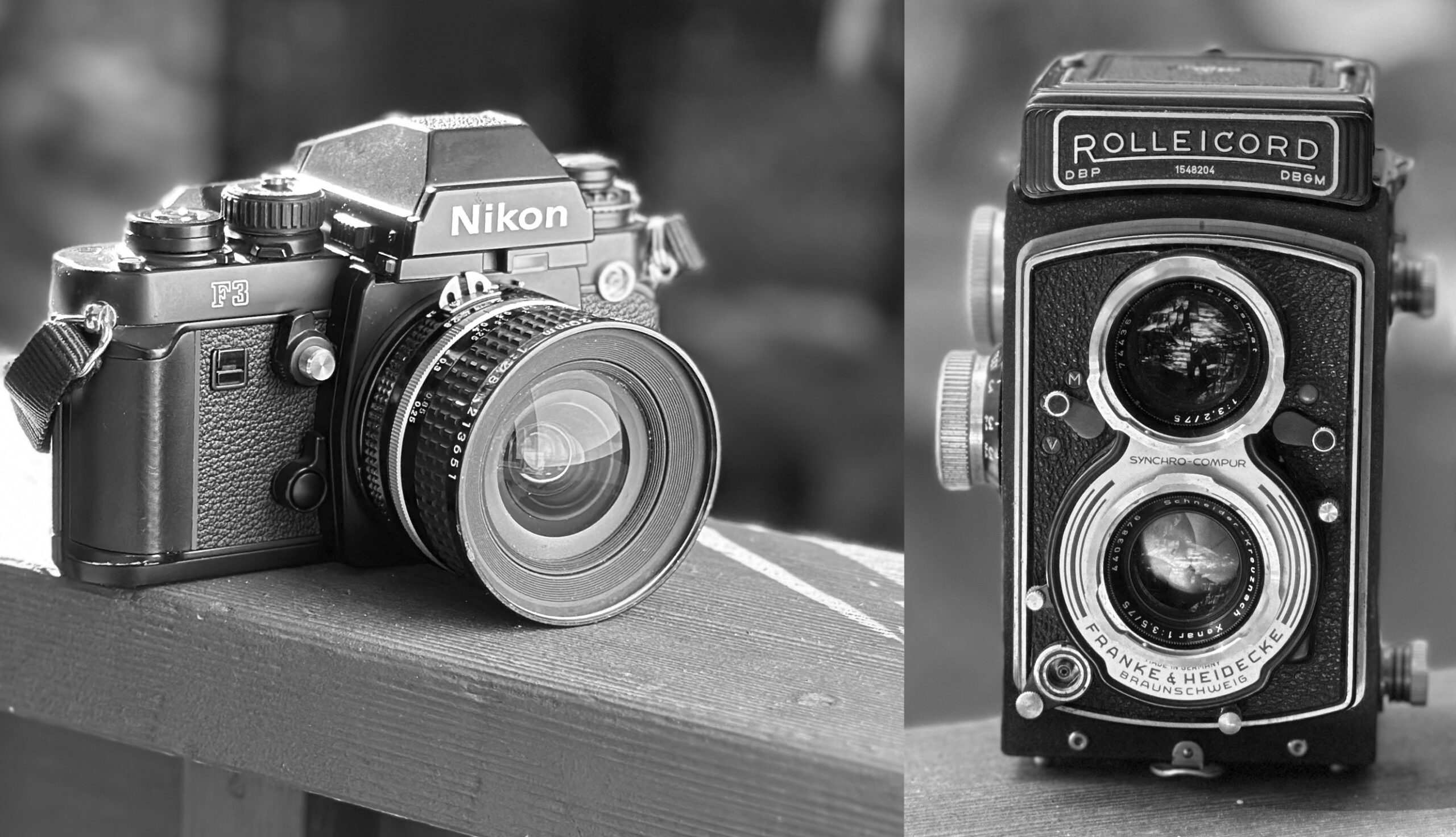

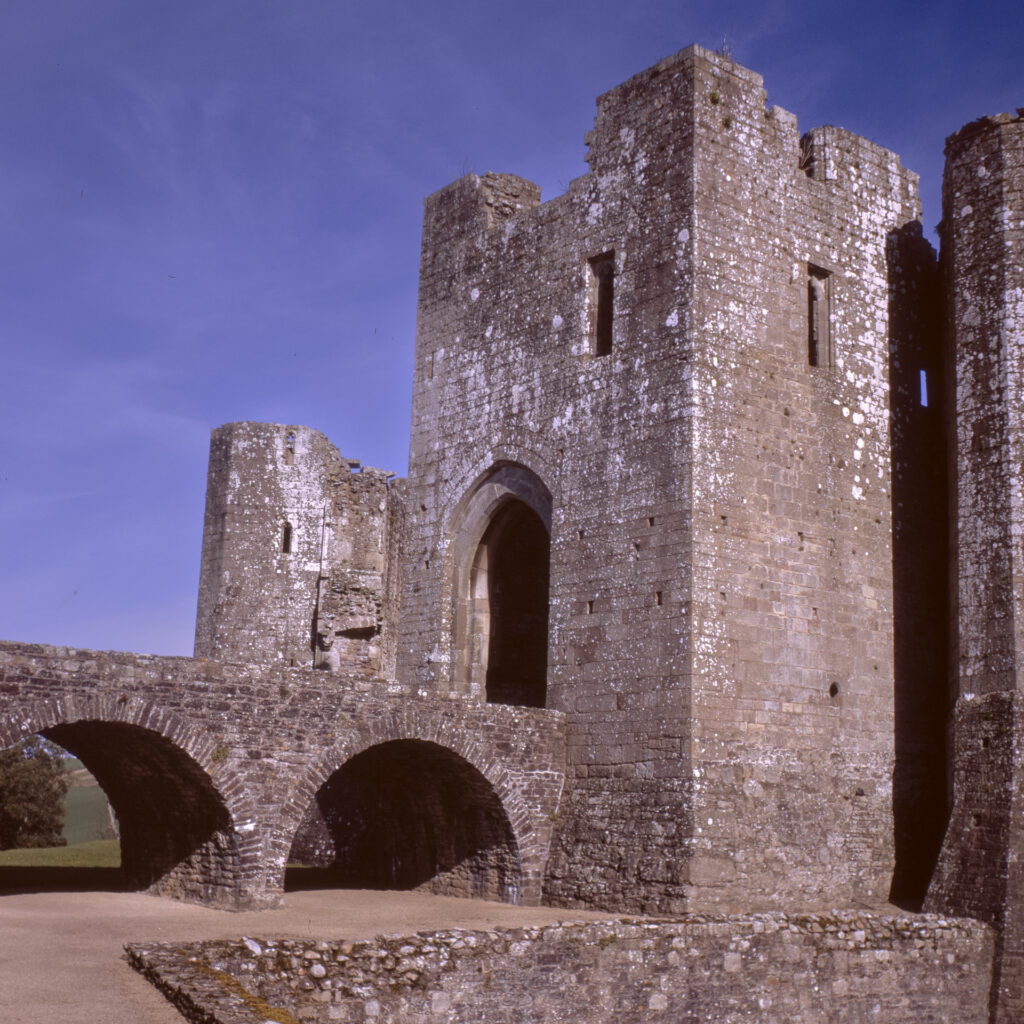
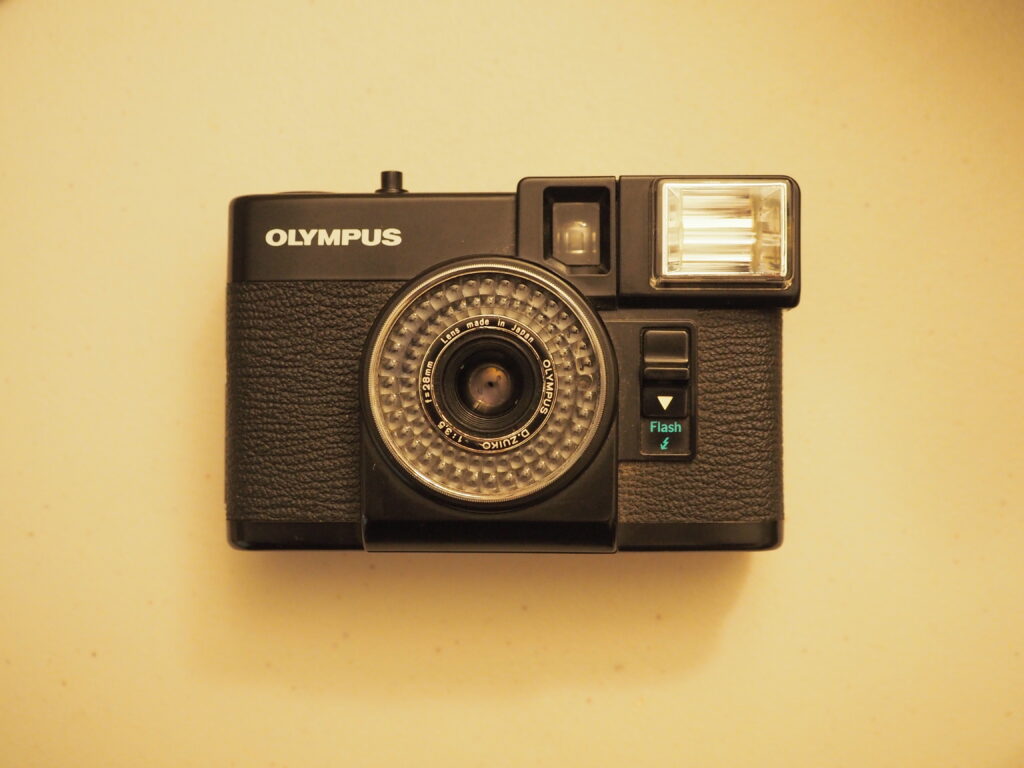
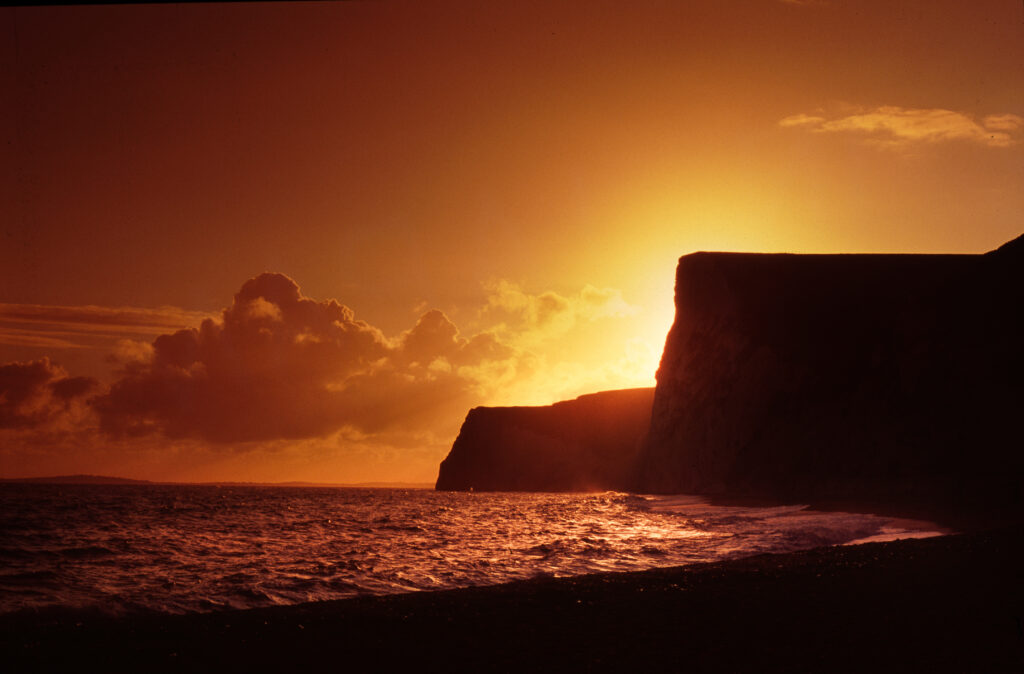
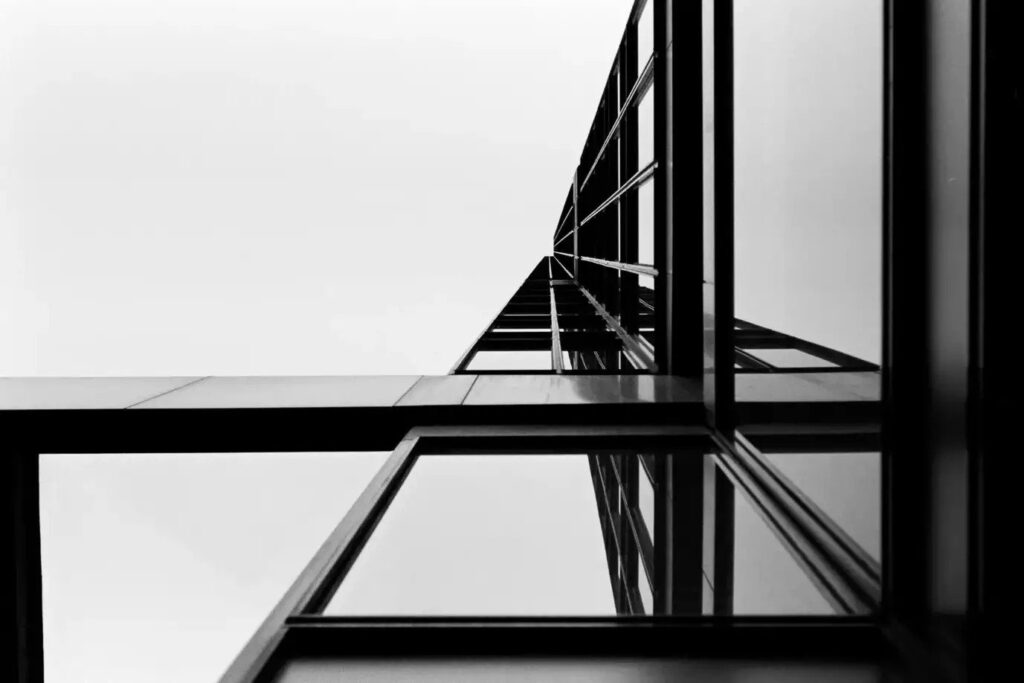
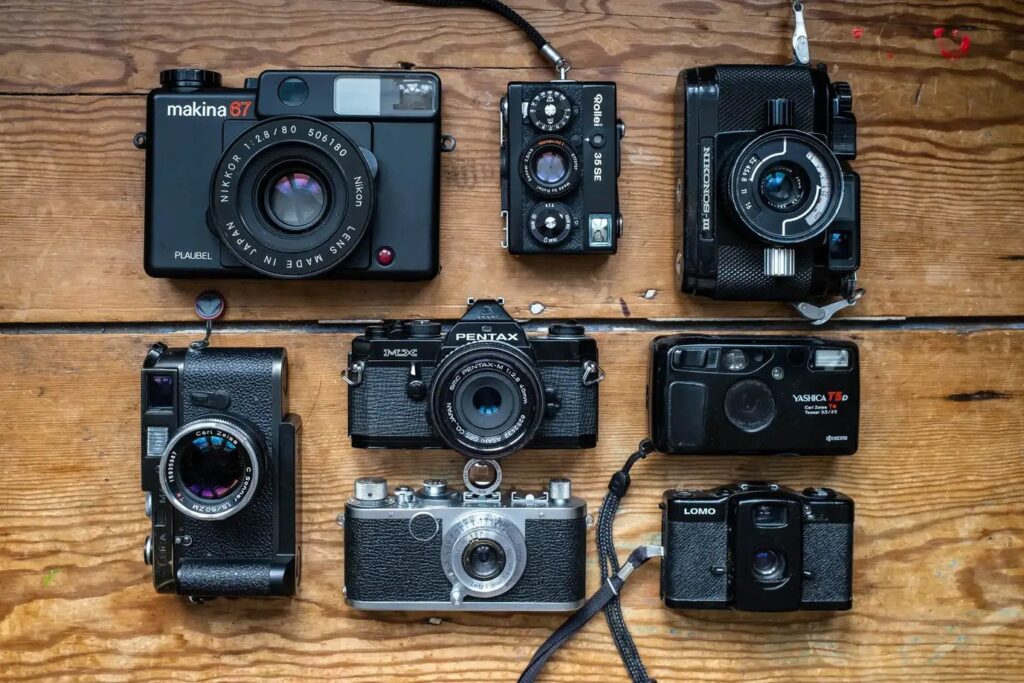
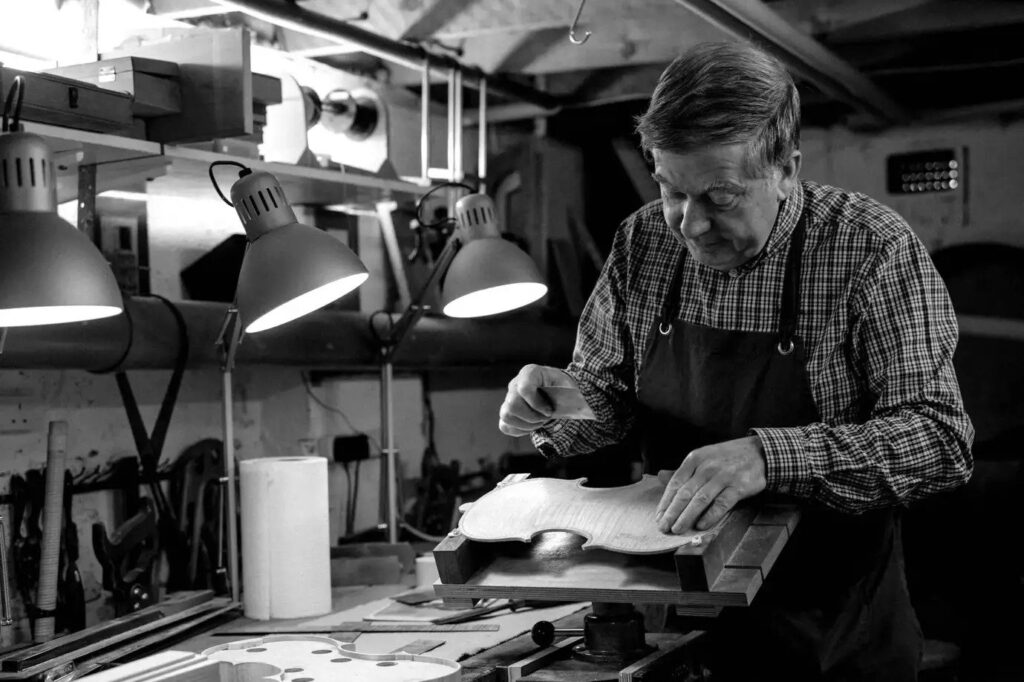
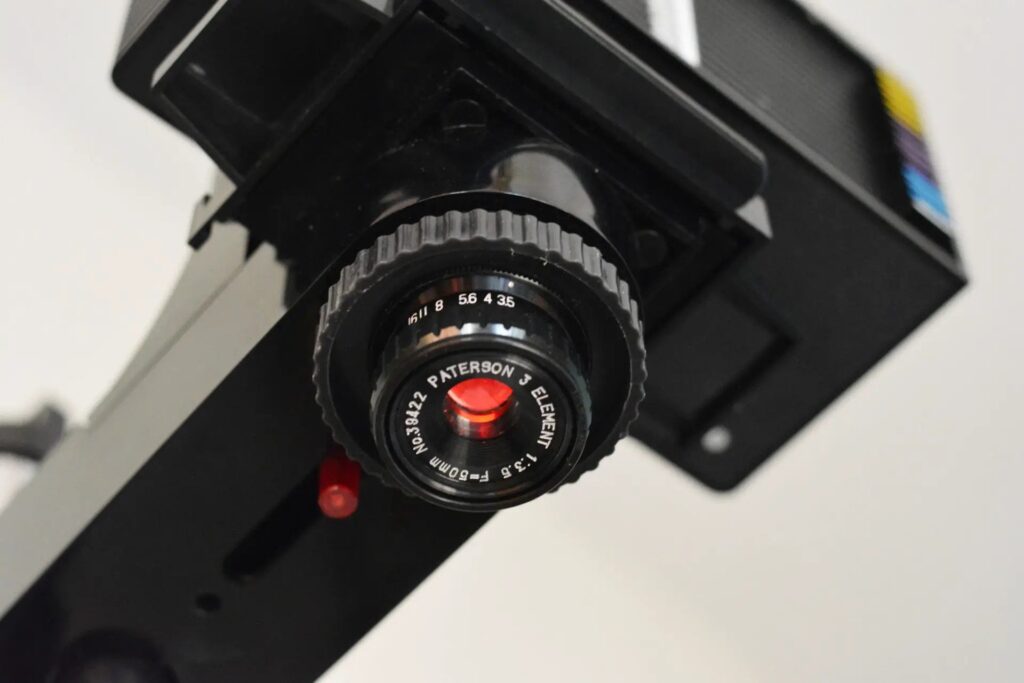
Comments
Art Meripol on 5 frames with Ilford XP2 film
Comment posted: 10/01/2025
Comment posted: 10/01/2025
Stephen Fretz on 5 frames with Ilford XP2 film
Comment posted: 10/01/2025
Comment posted: 10/01/2025
Comment posted: 10/01/2025
Hamish Gill on 5 frames with Ilford XP2 film
Comment posted: 10/01/2025
Comment posted: 10/01/2025
Alexander K on 5 frames with Ilford XP2 film
Comment posted: 10/01/2025
Comment posted: 10/01/2025
Doug Anderson on 5 frames with Ilford XP2 film
Comment posted: 10/01/2025
And just a minor point: there is no actual grain, i.e., silver, in C-41 negatives. All of the silver is removed by the processing leaving behind the dye clouds that form the image.
Comment posted: 10/01/2025
Comment posted: 10/01/2025
Richard Becker on 5 frames with Ilford XP2 film
Comment posted: 10/01/2025
Back in the mid-90's I did a series of adult education photography courses at least in part in order to learn developing and printing. We had access to bulk loading HP5 and a darkroom. I don't recall ever getting a negative from the HP5 that produced a print that I was pleased with. So I used XP2 (and Kodak T400CN) instead which I could drop off in one of the many mini-labs around, and usually got negatives which I could print successfully.
Now I develop all my black and white films and print digitally. But I still have a phobia about HP5 and have never used it since, nor have I used XP2, though only because of the demise of high street labs makes it unviable.
With hindsight my problems with HP5 were due to developing, which we did with something that came in a 1 gallon bottle labelled 'developer'. I don't think I ever knew what it was, and I have long since lost my notes which may have held a clue.
Richard
Comment posted: 10/01/2025
Gary Smith on 5 frames with Ilford XP2 film
Comment posted: 10/01/2025
Comment posted: 10/01/2025
Comment posted: 10/01/2025
Geoff Chaplin on 5 frames with Ilford XP2 film
Comment posted: 11/01/2025
The potential attraction of dye based films is the masking effect on the grain. I think a better solution, which allows for home processing cheaply, is the use of a staining developer - specifically PMK pyro. Something I did a long time back and have restarted now a safer commercial version (liquid form) is available from Bergger, Have you used pyro and what are your thoughts?
Dan Castelli on 5 frames with Ilford XP2 film
Comment posted: 11/01/2025
Thanks for posting an updated article on XP-2. It's a 'back pocket' film that I rely upon. When traveling (esp. overseas) I shoot XP-2 and rate it @ EI 200. I process the film 'in country' (those of us of a certain age know that expression) and sail through security/customs with negs safely nestled in printfile pages. I've used labs in Paris, Italy and the UK. Last time I did this was when we were in the UK and spent a few days in London before flying back to Boston. I dropped off my XP-2 at Rapid Eye Film Lab and arranged to have the developed negs delivered to our hotel before departure. When we got home, I headed into the darkroom and made contact sheets and made prints. My only complaint is the orange color cast which could be problematic when focusing.
Comment posted: 11/01/2025
Paul Quellin on 5 frames with Ilford XP2 film
Comment posted: 11/01/2025
Comment posted: 11/01/2025
Cem Eren on 5 frames with Ilford XP2 film
Comment posted: 12/01/2025
Adrian Riu on 5 frames with Ilford XP2 film
Comment posted: 12/01/2025
David on 5 frames with Ilford XP2 film
Comment posted: 17/01/2025
Comment posted: 17/01/2025
Comment posted: 17/01/2025